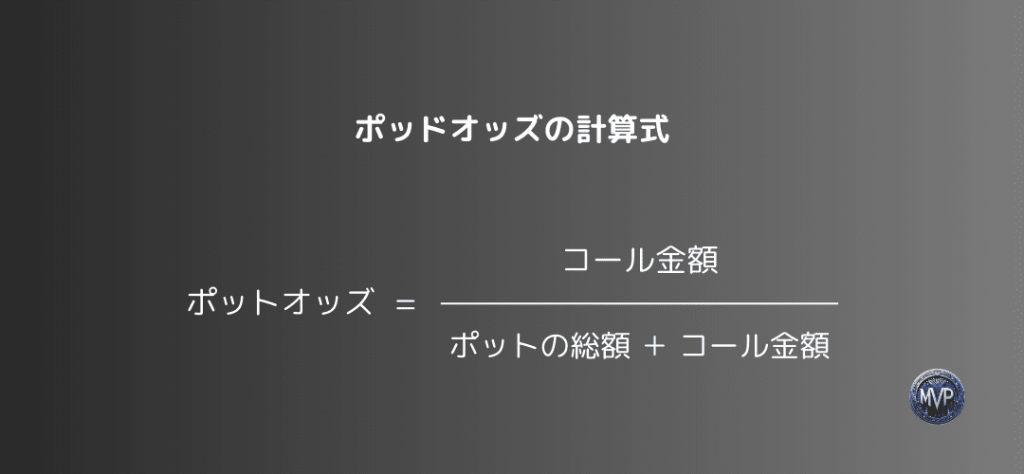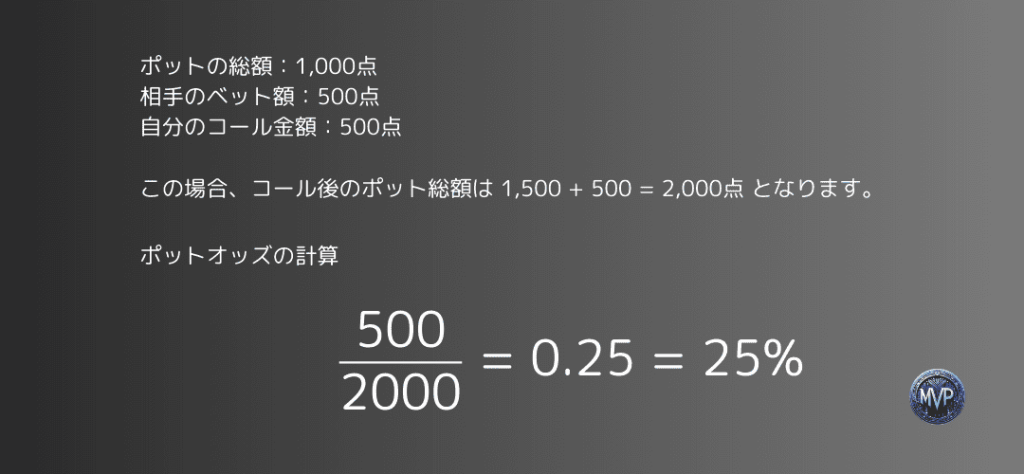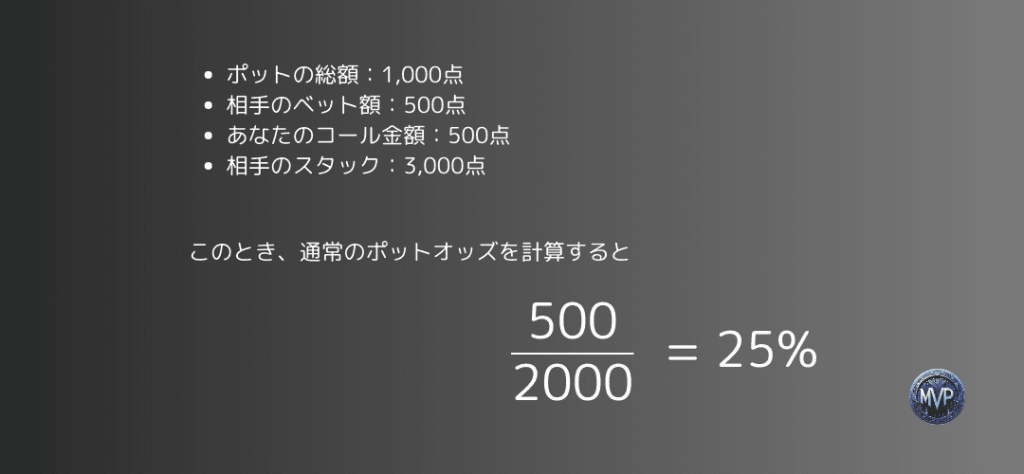Poker isn’t just a game of luck—mathematics and strategy play a crucial role in long-term success. Among the key concepts every winning player must grasp are pot odds and implied odds. Mastering these odds allows you to make smarter calls and folds, helping you avoid costly mistakes and increase your expected value (EV) in the long run.
In this guide, we break down these fundamental tools of profitable poker in a clear, beginner-friendly manner with practical examples.
What Are Pot Odds? (Beginner-Friendly Guide)
Pot odds refer to the ratio between the size of the pot and the cost of a contemplated call. This ratio helps you decide whether making the call will be profitable in the long run.
By comparing pot odds to the probability of completing your drawing hand, you can make mathematically sound decisions—folding when your chances are too slim and calling when the reward justifies the risk.
How to Calculate Pot Odds
The basic formula for pot odds is:

Pot Odds=Amount to CallCurrent Pot Size+Call Amount\text{Pot Odds} = \frac{\text{Amount to Call}}{\text{Current Pot Size} + \text{Call Amount}}
Convert this ratio to a percentage to determine the minimum equity (chance of winning) required to make the call profitable.
Pot Odds Example

Let’s say:
- Pot size: 1,000 chips
- Opponent bets: 500 chips
- Your call amount: 500 chips
The total pot after your call will be 2,000 chips.
Pot Odds=5002000=0.25=25%\text{Pot Odds} = \frac{500}{2000} = 0.25 = 25\%
Conclusion: You should call only if your chance of completing your hand is greater than 25%.
Pot Odds vs. Drawing Odds
To properly apply pot odds, you also need to understand your drawing odds—the probability that your hand improves on the turn, river, or both.
Here’s a table comparing common draws with their odds:
| Draw Type | Outs | One Card Odds | Turn + River Odds |
| Flush Draw | 9 | ~19.1% | ~35.0% |
| Open-Ended Straight Draw | 8 | ~17.0% | ~31.5% |
| Gutshot Straight Draw | 4 | ~8.5% | ~16.5% |
| One Overcard | 3 | ~6.5% | ~12.5% |
Use these probabilities to determine whether your draw justifies a call based on the pot odds.
Strategic Use of Pot Odds
- Make +EV Calls:
- Call only if your chance of completing the hand exceeds the pot odds.
- Example: With a 19% flush draw chance and 25% pot odds, fold—your odds don’t justify the call.
- Call only if your chance of completing the hand exceeds the pot odds.
- Leverage Pot Odds for Bluffing:
- Control your opponent’s decisions by adjusting your bet size.
- Deny them favorable pot odds to discourage calling.
- Control your opponent’s decisions by adjusting your bet size.
- Incorporate Implied Odds:
Pot odds don’t account for future bets. That’s where implied odds come in.
What Are Implied Odds?
Implied odds estimate how much you can potentially win after completing your draw. They factor in expected future bets from your opponent, especially when you’re holding a disguised or powerful hand like a nut straight or flush.
Why Implied Odds Matter
Sometimes, your current pot odds don’t justify a call—but if your opponent is likely to invest more chips when you hit your draw, the implied odds can make the call profitable.
Key Factors in Evaluating Implied Odds
- Opponent’s Stack Size:
- Deep stacks = higher potential reward.
- Deep stacks = higher potential reward.
- Opponent’s Playing Style:
- Loose opponents are more likely to pay you off.
- Loose opponents are more likely to pay you off.
- Strength of Your Made Hand:
- Strong draws like nut flushes yield bigger payoffs.
Implied Odds Example

- Pot: 1,000 chips
- Opponent bets: 500 chips
- Your call: 500 chips
- Opponent stack: 2,000 chips
Pot odds = 500 / (1,000 + 500 + 500) = 25%
Flush draw odds = ~25%
While this seems like a fold by pot odds alone, if you believe you can win another 1,500 chips after hitting, the call becomes profitable due to high implied odds.
How to Use Implied Odds in Practice
- Target Deep-Stacked Players:
More chips = more to win after hitting your hand. - Evaluate Draw Strength:
Low-equity draws (e.g., gutshots) need strong implied odds to justify calling. - Understand Opponent Types:
- Loose players = high implied odds.
- Tight players = limited post-flop payout potential.
- Loose players = high implied odds.
- Watch Stack Sizes:
- Big stacks = great for implied odds.
- Short stacks = limited payout; rely on pot odds alone.
- Big stacks = great for implied odds.
- Use Positional Advantage:
Acting last allows better decision-making and control over pot growth.
Draw Odds Summary Table
| Draw Type | Outs | One Card Odds | Turn + River Odds |
| Flush Draw | 9 | ~19.1% | ~35.0% |
| Open-Ended Straight Draw | 8 | ~17.0% | ~31.5% |
| Gutshot Straight Draw | 4 | ~8.5% | ~16.5% |
Pot Odds vs. Implied Odds: When to Use Which
Pot odds are concrete and based on the current situation. Implied odds are speculative but crucial in drawing hands where post-flop value exists.
Example:
You hold a flush draw and face a tight player with a short stack—pot odds only matter.
But against a loose, deep-stacked player, implied odds can justify a thin call.
Key Takeaways
- Pot Odds: Calculate your required equity with
Call Amount÷(Pot Size+Call Amount)\text{Call Amount} ÷ (\text{Pot Size} + \text{Call Amount}) - Compare it with your draw odds to determine +EV plays.
- Implied Odds: Account for future gains if your hand hits.
- Favor implied odds when:
- You’re facing deep stacks.
- You’re out of position.
- Your draw is well-disguised or nut-strength.
- You’re facing deep stacks.
By mastering both pot odds and implied odds, you’ll gain a powerful edge over recreational players and make mathematically sound decisions that consistently increase your win rate.


